GRANDMOTHER PROJECT

BY: LUCIA KAISER

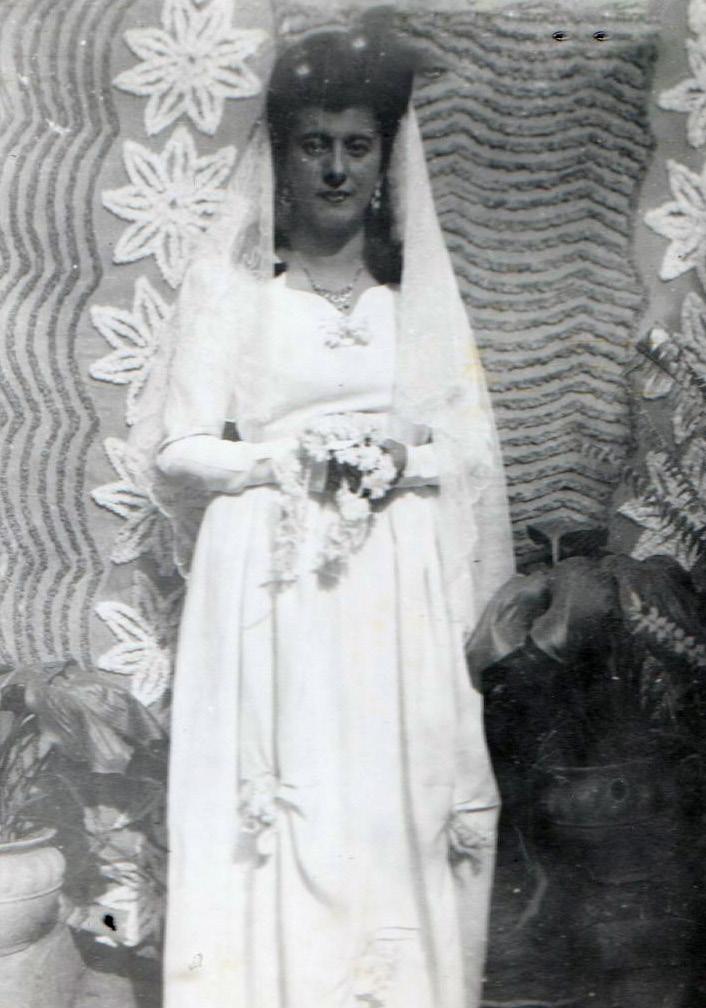


BY: LUCIA KAISER


Rosana Jimenez Rotavista was born on October 31st 1921 in Cali, Columbia. She was born to Anselmo Jimenez and Maria Palomino. She was the second oldest and only daughter of ten children. From a young age, she had an eye for fashion, which was encouraged by her father, who worked for Singer’s Sewing Machine. She was raised around nine brothers, which gave her a tough skin, yet that did not stop her from being delicate and paying attention to detail in everything she did.
She was raised in the Presbyterian Church because her father wanted his children to have a better education, so he sent them to a private American Presbyterian school. This was controversial because most people in her country were Catholic, there was a religious war, and non-Catholics were being persecuted. She strongly emphasized her faith and sharing the gospel. This would eventually lead to her leaving her country for the US.
Her mother was very particular about how she raised her home, and Rosana was considered a second mom because she was a teenager when her siblings were born. This caused her to mature faster due to her responsibilities at a young age. People in the town would often judge her because they thought she was a teenage mother carrying her younger brother, so she had to dress older than what was expected of girls her age to avoid being judged. Her chores included feeding, bathing, dressing, and watching her brothers. She grew up in a male-dominated era, so many brothers were expected to take care of her. She worked in a women’s clothing store owned by a Jewish family. She was very accepting of all religions and did not let the religious turmoil of her country affect her kindness and generosity. She was
highly athletic in her community and participated in various activities, including dancing, swimming, running, and jump rope. Her close circle was primarily comprised of her brothers' friends, and she was known to be everyone’s “older sister.” She was described as bossy yet compassionate. Her father always told her brothers, “Don’t mess with the boss.” She was firm yet still had the strength to be gentle. She was a sweet and kind person, yet she could be firm when necessary.
Her family often went to the Rio Pance and Rio Cauca, where water flowed from the mountains. Her family lived in a valley where the Andes Mountains met. The roughness of the mountains caused Colombia to be less populated, but Cali was one of the most populous cities in the country.
She met my great-grandfather, Edmundo Rotavista, in elementary school when she was twelve and he was eleven years old. They had classes together and lived in the same neighborhood, but they started dating when they were eighteen. They both had crushes on each other throughout school, and my grandfather was wildly infatuated with her. They married when she was twenty-one on December 31st at 7:00 AM in a large church with a large crowd, as they were well-known in the community.
Her brother had a daughter, Angela, and his wife got sick while pregnant with another baby and could not take care of her. Rosana offered to care for Angela while her sister-in-law recovered, but Angela quickly grew comfortable with her new family during her stay. Edmundo and Rosana officially adopted Angela because they were having trouble having children of their own.
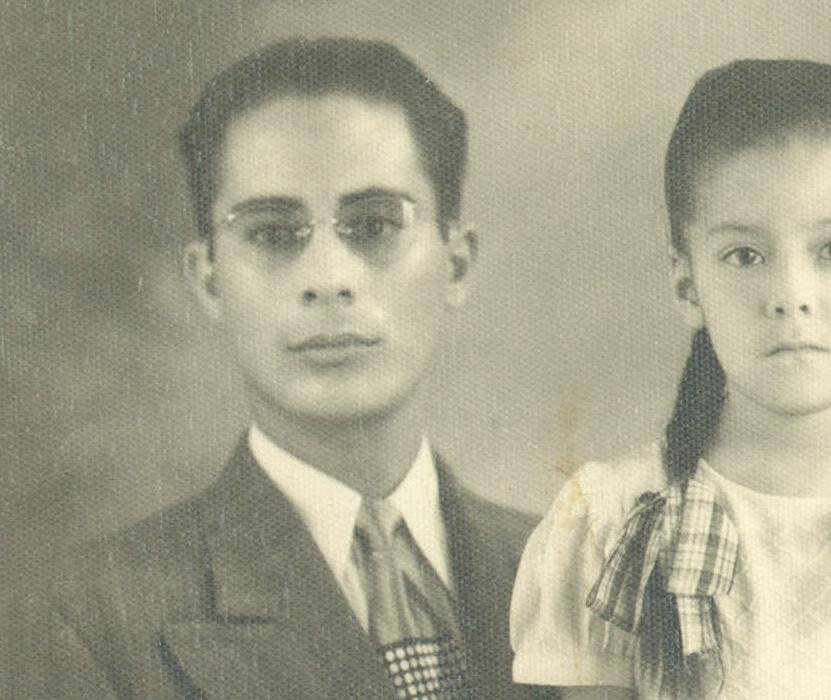
Edmundo had networked with American missionaries who had come to Colombia and decided to move the family to Tupelo, Mississippi, in 1952. It was becoming increasingly dangerous for them in Colombia. He had a work contract to teach Accounting and Spanish at a Pentecostal college. Rosana knew very little English when she arrived, and she wanted to study as much as possible. She joined the college choir to help her learn, and in the process, she made many friends. The school provided housing for the family, enabling them to quickly establish a community of friends and support. Since there were no other Spanish-speaking people around them, they had no choice but to assimilate into their new culture.
The president was W. Stine Isenhower, and Mississippi was experiencing civil rights reform. My grandmother experienced some racism and
discrimination because she had darker skin and an accent. She was sometimes asked to sit at the back of the bus and was told not to speak Spanish when working. The Rotivistas found that Americans were a bit more withdrawn and reserved than their community back home, and the transition to a new culture was challenging; yet, that did not deter their strong and kind spirit.
Coming from Colombia, my grandparents did not bring much, so they had to buy much of their clothing and accessories in Mississippi. One of the significant differences in fashion from Colombia to Tupelo, Mississippi, was the weather, as Cali sits close to the equator and is often hot and humid. Mississippi had a cooler environment, so wearing more layers and coats was something they had to incorporate into their closets. My great-grandmother was often seen in a white blouse and pencil skirt as she loved
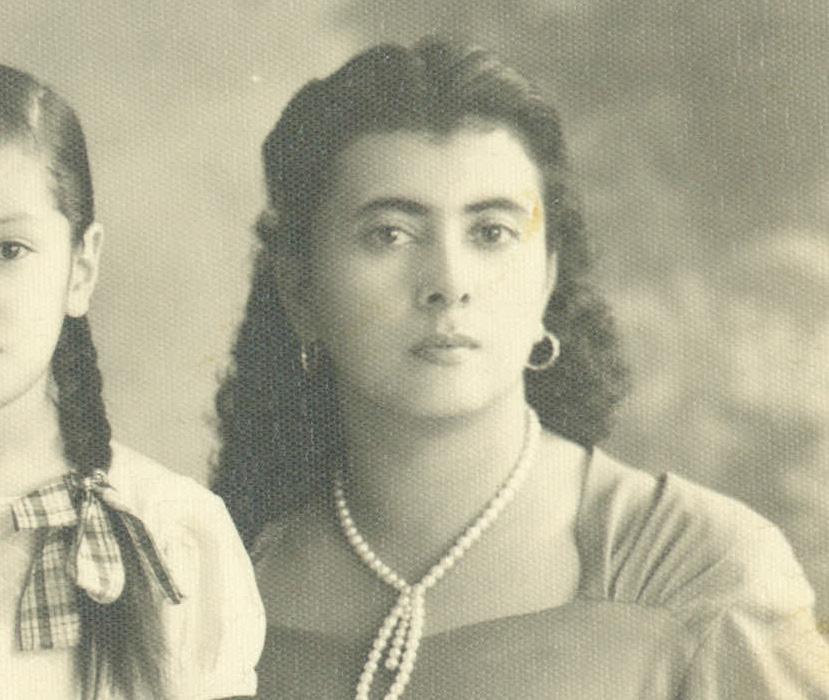
the sophisticated silhouette. My great-grandmother made friends quickly because she was so lovely and would often attend religious conventions with her husband. There was a Bible study the whole family would attend, hosted by their neighbors, the Coopers, where all the families in the neighborhood would socialize and come together. Religion was my great-grandmother's driving force in everything she did and formed the foundation of many of her friendships.
Edmundo decided he wanted to pursue a higher level of education and connected with a missionary friend, Emery Newman, in Fort Worth, Texas. He was accepted into Texas Christian University and moved to Fort Worth, where he began saving to bring his family to be with him eventually. While waiting for the move, Rosana and Angela stayed with a friend in Anniston, Alabama. This friend was
also Colombian, so tasting a bit of home while in the States was a refreshing experience.
After moving to Fort Worth, my great-grandmother got a job at Monnig’s Department Store, which significantly improved the whole family’s wardrobes. Rosana loved the quality of the clothes sold there and bought Angela many outfits made of satin and lace. She loved shopping and took great care of her shoes, clothes, and accessories. She took every opportunity to dress up nicely, and on Sundays, she would coordinate colors with Edmudo’s tie and handkerchief. She loved to indulge in the latest fashion trends and etiquette associated with American fashion. She took pride in her appearance and valued a quality outfit.

Merriam-Webster’s dictionary defines Americana as “materials concerning or characteristic of America, its civilization, or its culture.” In the 1950s, the definition of Americana became more concrete postwar with the addition of televisions in homes, magazine ads, and a culturally interconnected country. The structure of an average nuclear family was a breadwinner father and a wife who cared for the children in a suburban home. Entering this new standard was very different from Cali, Colombia.
There were new traditions and holidays to celebrate in America, and it felt like there were so many opportunities due to the “American Dream.” The Rotivistas were escaping religious persecution and hoping to reap the benefits of their part of this dream. Rosana thought it was essential to celebrate Thanksgiving. She had never cooked a turkey before, and thought most American food was flavorless, yet that did not stop her from wanting to participate in this new tradition. She tried to blend in as much as
possible, prioritizing her daughter’s education and assimilation of many social norms.
While living in Tupelo, Rosana was very social and became friends with her neighbor, who often talked about her nephew, a talented singer. Unbeknownst to Rosana, this neighbor was the Aunt of Elvis Presley, America’s King of Rock and Roll. My great-grandmother would look at photos of this young kid and wish him well in the future. As he became famous, she was thrilled to share her connection to the star and took pride in saying she lived in Tupelo, where he was born.
My great-grandmother was hesitant to participate in the popular culture around this time. She felt it may have been a distraction from religion and found some of it challenging to understand. She found great comfort in her Bible studies and would often turn to scripture for her choice of leisure and entertainment.

Liberal authority had been prevalent in Colombia from after World War I till 1946, when a Conservative Leader, Mariano Ospina Pérez, took office after two liberal candidates had split the liberal vote. Conservatives had been out of the office since before the 1930s and had suffered violence from their counterpart. With their win in 1946, they instituted a series of violent acts against Liberals. It marked the beginning of a period later known as La Violencia, which lasted from 1948 to 1958. It began when, on April 9, 1948, Jorge Eliécer Gaitán, a leader of the left wing of the Liberal Party, was assassinated in downtown Bogotá in broad daylight.
Colombia experienced an intense inter-party conflict in the 1950s, which unfortunately led to the deaths of over 200,000 citizens. The Liberal and Conservative Parties formed a power-sharing agreement after seeing a rise in a radical third party. This led to significant developments in the following decade, as it unified a previously divided country and prompted state reorganization, which in turn affected politics and the lives of citizens. However, this new political alliance resolved all political tensions and brought up its issues.
Many tactics employed to establish political alignments lacked popular support, and coercion was used to secure authority for this new system. The failure to incorporate key subaltern groups compelled the National Front to implement a more aggressive strategy for diffusing popular resistance, which caused a rise in revolutionary violence among the Colombian people.
There was also significant political change within the United States as the Civil Rights Movement intensified its efforts for racial equality. President John F. Kennedy was assassinated in 1964, which caused his vice president, Lyndon B. Johnson, to take office and start to enforce his ideas of a “Great Society” where racial injustices and poverty were beginning to be acknowledged. The introduction of Medicare and Medicaid created numerous new economic opportunities for the disadvantaged.
The Vietnam War was also a prominent event in the 1960s in America, which was unfortunate as it took attention and expenses away from efforts to fight the War on Poverty. Many movements began to advocate for peace both domestically and internationally. There were efforts made to fight for civil rights, with numerous protests and sit-ins occurring all over the country, which ultimately led to the passage of the Voting Rights Act in 1965, eliminating poll taxes and literacy requirements.
The optimism of the 1960s in America died with the assassination of Civil Rights Leader Martin Luther King Jr., in April of 1968. There was a defeated feeling with the Vietnam War, and many citizens felt it would be impossible to win. Violence increased, and police had used tear gas and billy clubs to break up protests at the Democratic National Convention in Chicago in 1968. The youth's progressive efforts remained strong with events like Woodstock in 1969 that brought them together under the efforts of progressivism.
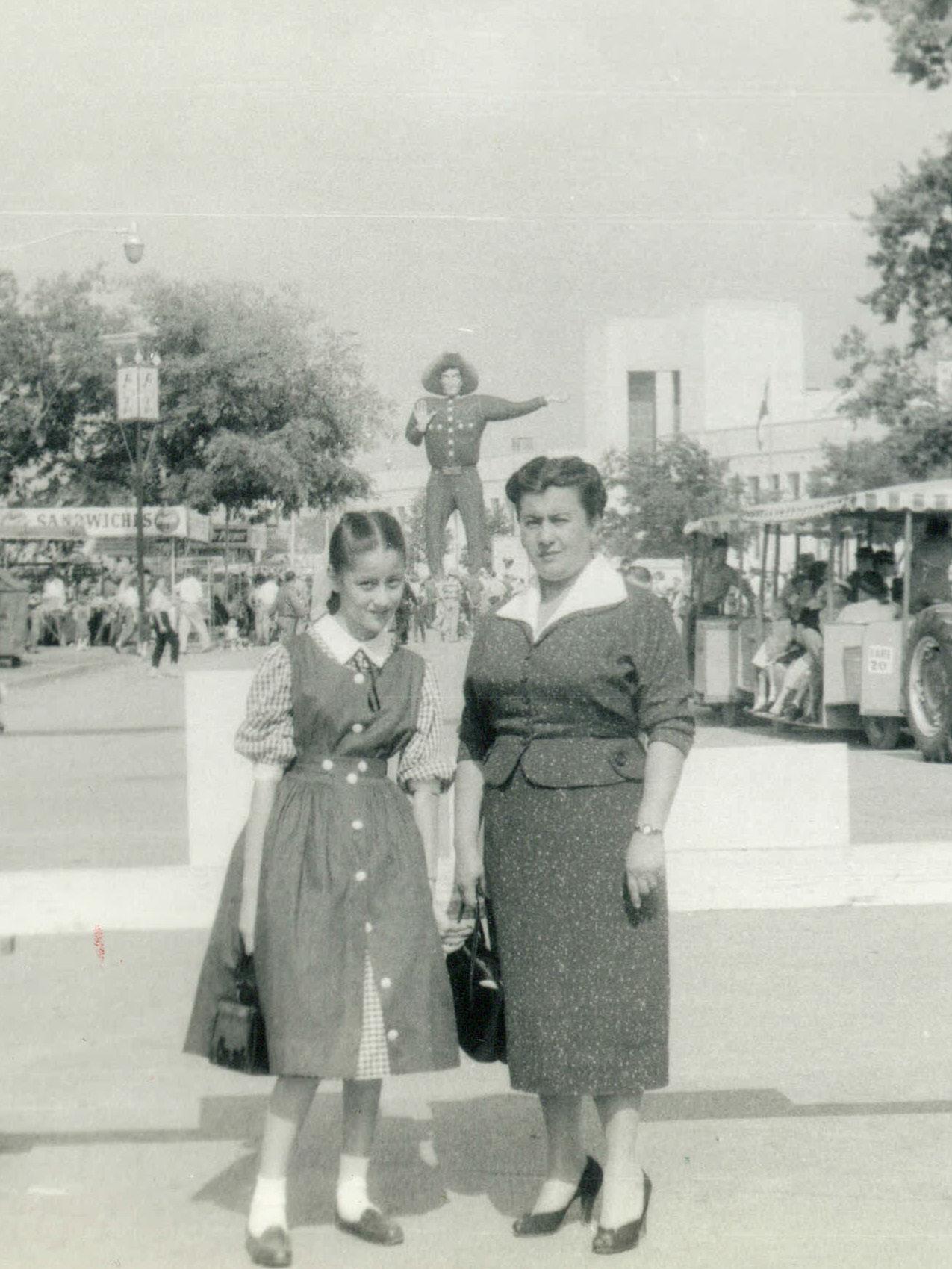

In the 1960s, the community in Cali, Colombia, was primarily centered around its religion and the influence of the Roman Catholic Church. Outside of one's spirituality, their cultural, social, and political life was also deeply rooted in this religion. The community was built around religious norms, with a majority of residents identifying as Catholic. Many social gatherings revolved around the church, including weddings, baptisms, masses, and processions. Roles in Colombia were traditionally patriarchal and paternalistic in their familial relations. Cali was the third-largest city in Colombia at the time, and a significant portion of the community was centered around the large Cathedral in downtown, known as La Ermita. It sat near the Rio Cali, the river that runs through the city, and had numerous parks nearby where community gatherings, such as parties, masses, and even protests, frequently took place.
However, violence overtook these communities as tension between the Catholics and the Protestants grew. There were protests, and many protestants
were the targets of religiously motivated violence. My great-grandfather, Edmundo, was walking with one of his friends after a visit to the optometrist when someone came up to them on a corner and shot his friend at point-blank range. Edmundo ran off to try to find someone to help, but by the time he came back, it was too late. He and his friend were both Presbyterians, and this made them the targets of senseless violence. My great-grandfather then decided the best thing to do would be to leave Colombia and come to America, where he and his family could live in peace away from any religious persecution.
In contrast, Fort Worth, Texas, was a place where most forms of Christianity were accepted, and my great-grandparents felt safe to attend their church, the Southside Church of Christ. While the community in Fort Worth was not solely centered around religion, many residents took pride in their weekly attendance at church on Sundays, and many families socialized through this activity.

There were many centers of entertainment in Fort Worth at this time, but one of the most popular was the 7th Street Theatres, which included The Palace, The Worth Theatre, and the 7th Street Theatre. With movies and television officially in color for the public around this time, many weekends were spent in the theater or front of the TV watching shows like "Sing Along with Mitch," "The Lawrence Welk Show," and "I Love Lucy” with Lucille Ball.
My great-grandparents spent most of their time attending church, unless they were working. A typical weekend would include attending church, dining at a nice restaurant with friends afterward, and then returning home to bake for the rest of the evening. They fought hard to live the simple life, with Rosana working at a department store called Monnigs, and Edmundo working as a Professor and pastor. So, when they weren’t working, they would spend time with their family and enjoy their mundane days.

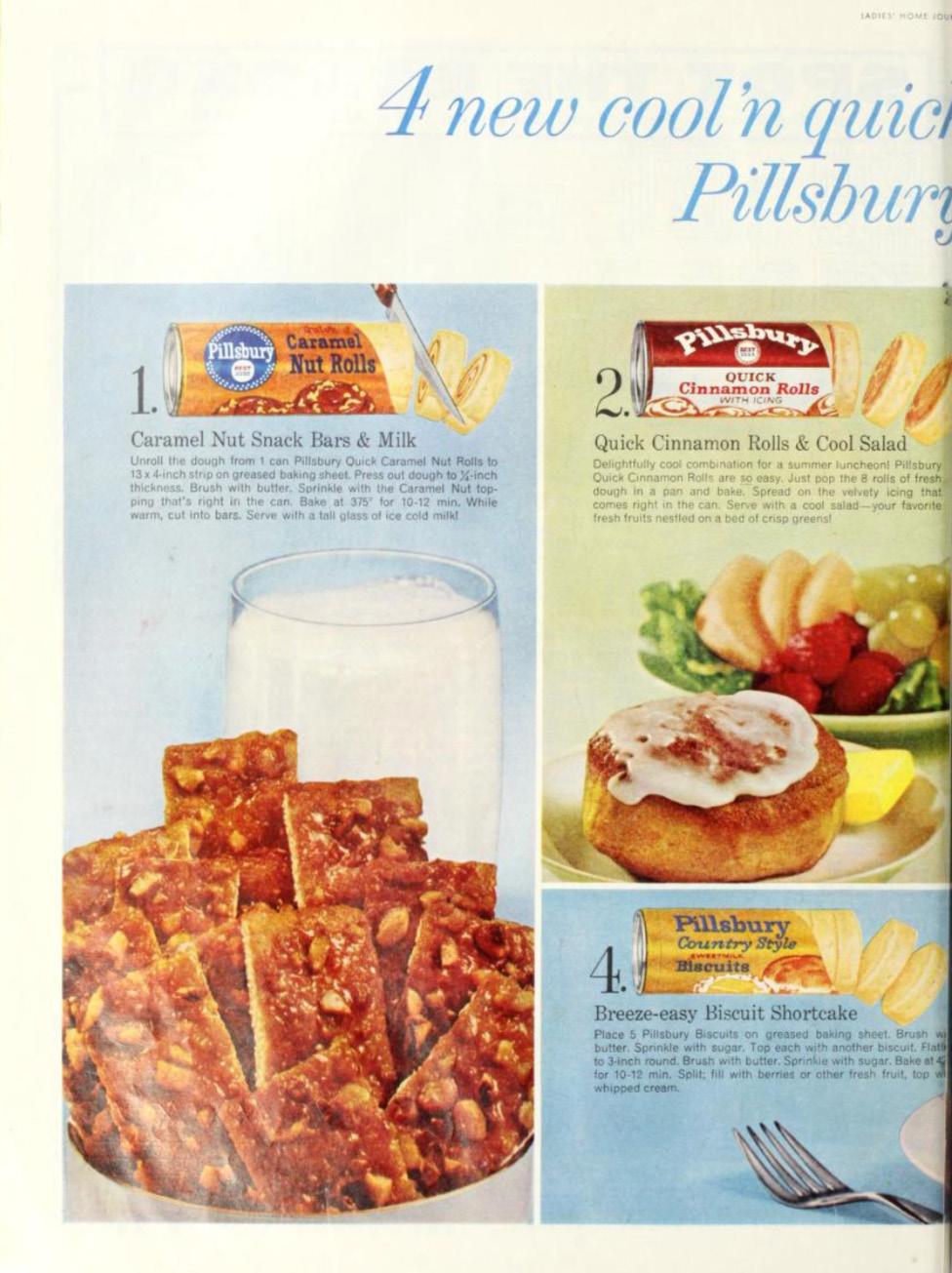

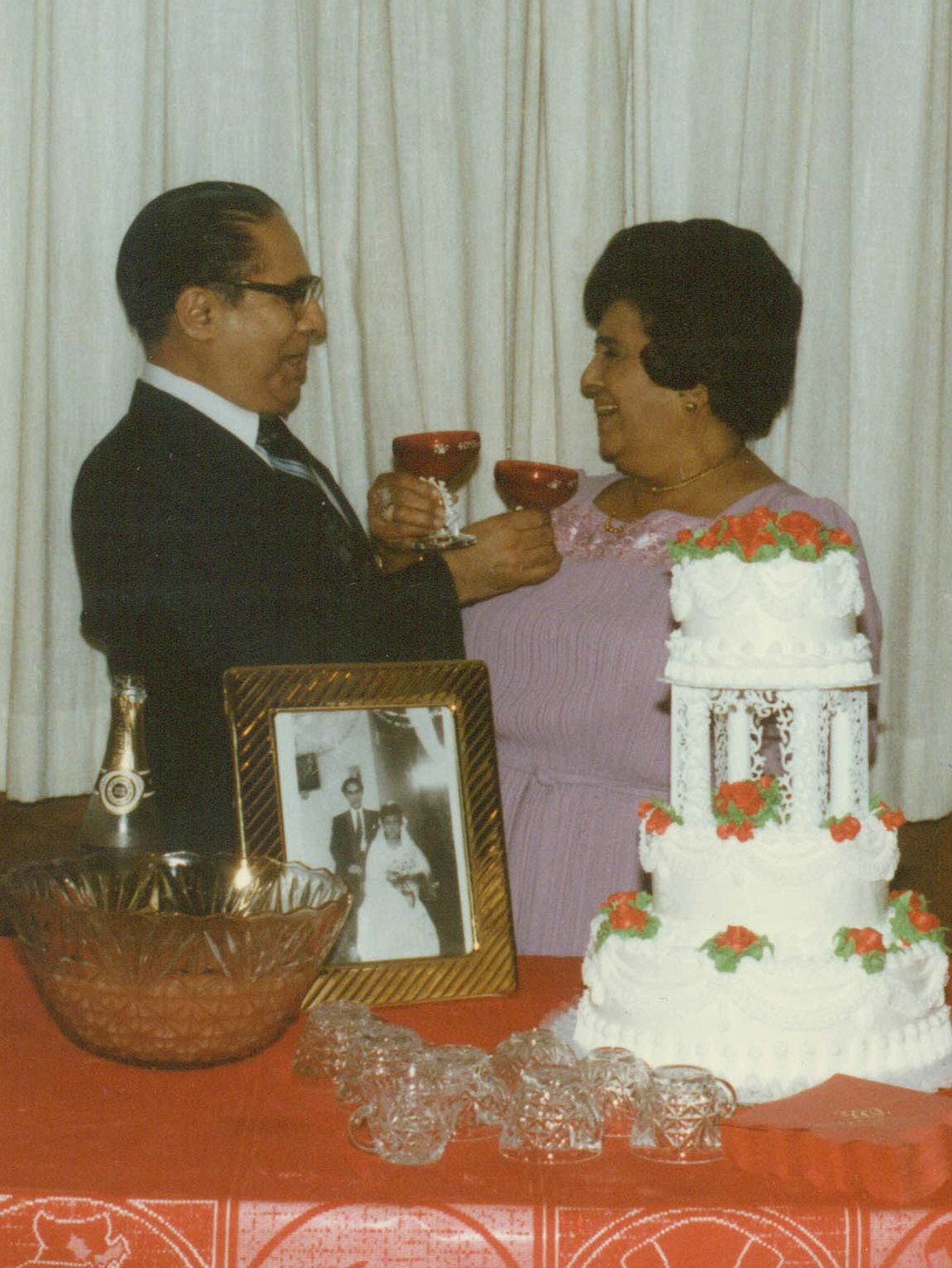
Fashion in the United States in the 1960s can be characterized by the large social movements that were occurring at this time, with the Civil Rights and Women’s movements happening all over the nation. The 1960s were iconic for their A-line dresses, clean lines, and bright colors, all of which were influenced by pop culture and societal movements. Many actresses, such as Audrey Hepburn, Doris Day, and Brigitte Bardot, had a profound influence on fashion during this period, as movies were becoming increasingly popular and mainstream. One of the biggest fashion influences was the First Lady of the United States, Jacqueline Kennedy, who was married to John F. Kennedy. She was one of the first American political fashion influences, and her couture style had become very popular, characterized by a minimal, modern, yet feminine look.
Other sources that had a significant influence on fashion included magazines such as Vogue, Vanity Fair, and Seventeen. The contents of these magazines were specifically targeted at women and featured ads that advised them on how to be fashionable and what social norms allowed them to wear. Social changes also influenced fashion, with notable events including college student protests, the Hippie movement, the Feminist movement, and the Environmental movement. All of these progressive changes emphasized the power the youth had over the fashion narrative at this time. The youth would watch the news and television, which would feature these political protesters and events, such as Woodstock in 1969. The art movements of the time also held significant importance for the look of the 1960s, including Op Art and Pop Art. The general silhouette of this era was more elegant yet casual than in years past, and many garments
featured a tubular shape. Numerous iconic clothing styles and silhouettes, including the A-line silhouette, empire waistlines, pantyhose, bright colors, paper dresses, go-go boots, the miniskirt, Continental suits, Nehru jackets, and Safari Jackets, marked the 1960s. Many style tribes emerged in the 1960s, including the Mods, Hippies, Feminists, and those influenced by Space Age fashion. The mods were based in London and could be identified by their long hair, granny glasses, and Edwardian finery. The Hippie movement was completely different from what was seen before, where men started to grow their hair out, and jeans began to become the mainstream symbol of solidarity for the working class decorated with paint and patches. Feminists began to adopt a style closer to men’s fashion, rejecting restrictive undergarments such as girdles and waist shapers. Space Age Fashion was a primary influence on Pop and Op art, characterized by looks featuring primary colors.
There were many famous designers from this time, such as Cristóbal Balenciaga, who continued to be a strong influence. Yves Saint Laurent opened the first Prêt-à-Porter store, a ready-to-wear boutique, and began selling his designs to a more mainstream audience. Oleg Cassini was the sole designer for Jackie Kennedy, as his simplified designs were the only clothes she wore. Mary Quant was a dressmaker known for her miniskirts and her boutique on the King's Road in Chelsea. Rudy Gernreich was famous for designing works that exposed as much of the body as possible and created the No Bra bra. The fashion industry was changing rapidly, with teenagers’ fad behaviors and new radical styles becoming mainstream.
While Fort Worth experienced many of the larger trends of the 1960s, this North Texas city had a more conservative look. Fashion went beyond just what you wore, but defined the way you were perceived and how you expressed yourself. For Rosana, her family needed to be viewed as an elegant unit, so she would shop for everyone and ensure that everyone’s outfits were color-coordinated. As church was her primary source of socializing, she made sure to make an event out of it and was dressed as well as she could be every Sunday.
She would shop at department stores like Monnig's, Cox's, Strippling's, The Fair, Mott's, Woolworths, and the Leonard Brothers. She worked at Monnig’s department store, which offered her employee discounts and other benefits. Her daughter, Angela, was her pride and joy, so she made sure to buy her only the best clothes. Angela was quite spoiled, so Rosana would buy her skirts and dress her up until she was an adult.
Rosana took great pride in her appearance and carefully selected her accessories. She loved
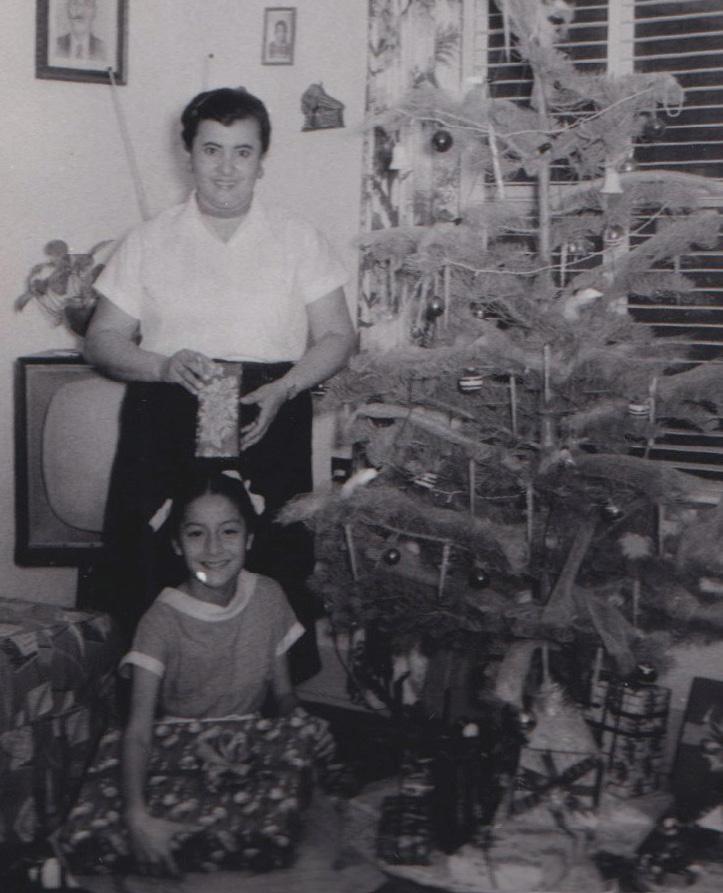
wearing large jewelry, pearl necklaces, big jeweled earrings, gold rings, and brooches. She had an extensive collection of jewelry and kept everything very organized, allowing her to mix and match for her outfits easily. When shopping, she would look for large floral patterns, bright colors, and shiny materials. She admired Barbara Streisand’s fashion choices and would strive to stay up-to-date with all the latest trends. Most of the time, she would be seen in her starched blouses and pencil skirts as she loved to look classy and refined.
When she moved from Colombia, she seized the opportunity of a new city to redefine how she and her family were perceived. As a Latina woman, she faced discrimination and knew that if she wanted to be respected, she had to dress the part. It was not easy, but after settling in, she found her identity here in the United States, and fashion became something that brought comfort and joy to the days she was working so hard for her family.
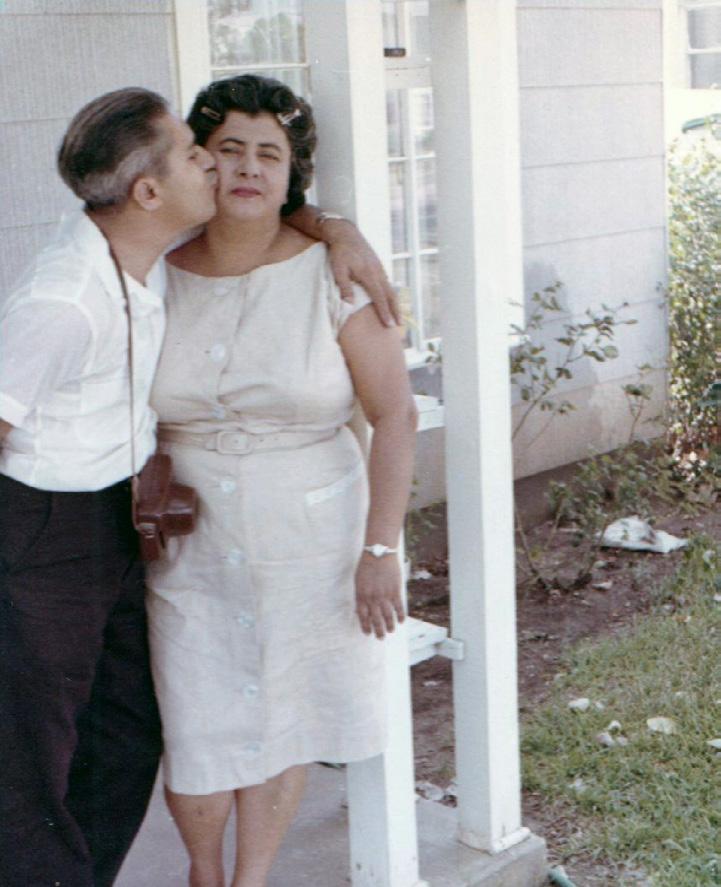

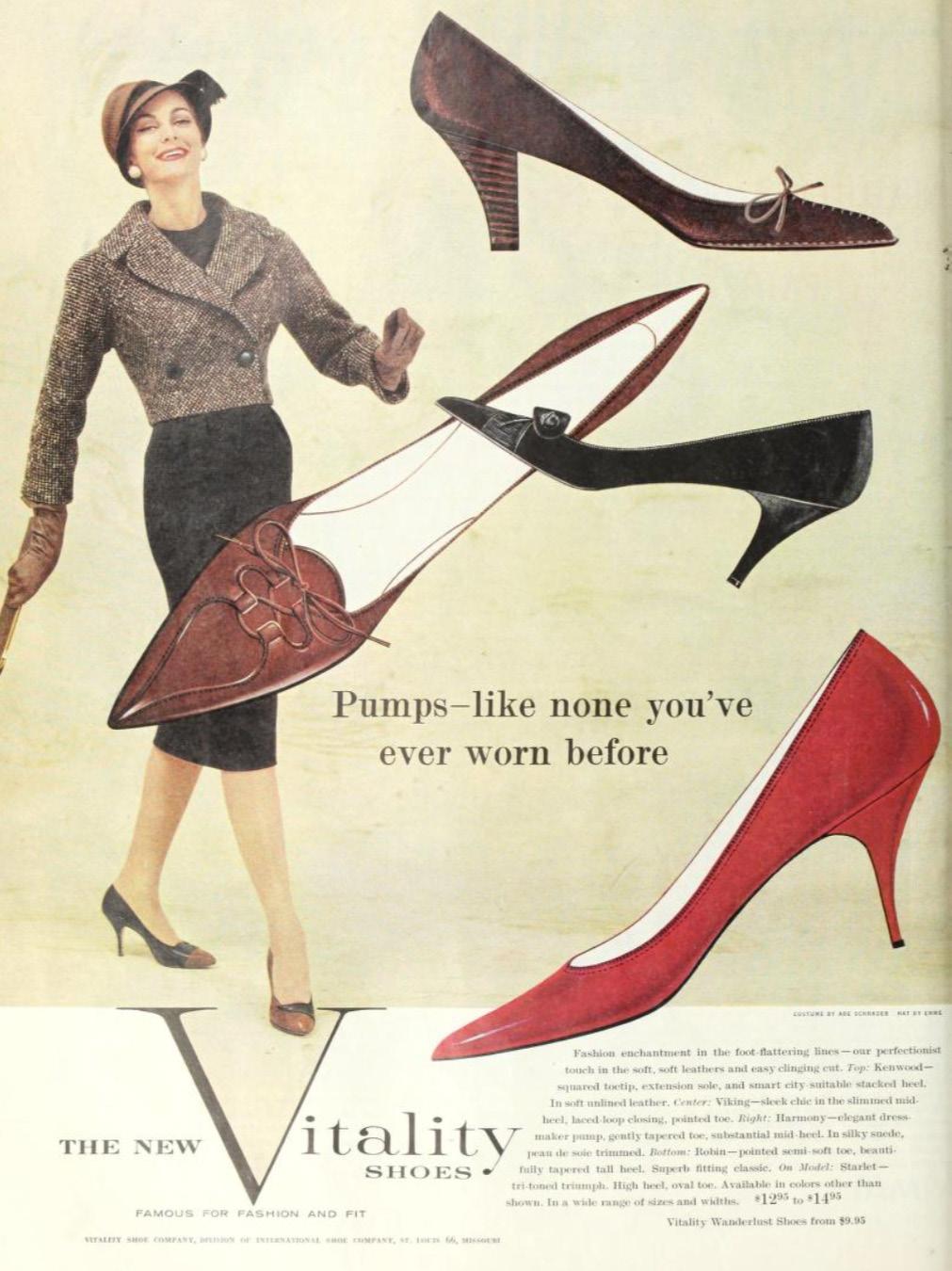





Information:
Survey of historic costume (7th ed.) by Tortora, P. G., & Marcketti, S. B. 1960s: Style Tribes Emerge (PowerPoint Slides) by Kinley, T. Colombia - La Violencia, Dictatorship, And Democratic Restoration, Britannica, by Kline, H. & Garavito, C.
Interviews with Angela Garcia (daughter of Rosana) and Emilia Garcia Kaiser (Granddaughter of Rosana)
Images of Rosana were sourced from Angela Garcia
Ads:
James A. Cannavino Library: Popular Magazines by Decade: 1960s Ebay.com: 1960’S Monning’s Department Store / Fort Worth Newspaper Ad Lot